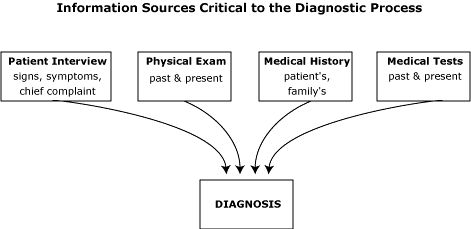The role of testing: evaluating test results in a clinical context
Pathology testing is undertaken for many different reasons. It may be to assist in the diagnosis of a disease or to monitor changes in a previously diagnosed disease. When using pathology tests to assist in the diagnosis of a disease the doctor/healthcare professional must have a suspicion that the patient has that condition. The doctor/healthcare professional will evaluate all of the relevant information they have to come to a likely cause of a patient’s complaint. These other pieces of information used by the doctor in making a diagnosis include your clinical status (physical signs and symptoms) and your personal and family history. Pathology tests are not foolproof and can present an incomplete picture when not put into proper clinical context, and interpreted alongside other pieces of information. Careful evaluation and consideration of test findings increase the reliability of a diagnosis and reduces the chance of medical error.
Based on these findings the doctor/healthcare professional will think of a few possible diagnoses and may use a pathology test that may assist in confirming the diagnosis. In the case where a diagnosis has been made such as Diabetes or elevated cholesterol, pathology tests are used to see if treatment has been effective in maintaining the blood sugar or cholesterol at normal levels.
The clinician must always ask, ‘Do the test results fit with the other pieces of the puzzle?’

If the results do not fit well with the clinical picture, some additional investigation may be required. Often tests will be repeated if the test can be affected by diet or exercise that may lead to a possible false change. If a patient has a chronic disease such as Diabetes or elevated cholesterol then pathology tests will be requested at regular intervals or when there are changes in patient symptoms that may indicate that the disease has become worse.
Source
Fraser CG (1986). ‘Interpretation of Clinical Chemistry Laboratory data’ Blackwell Scientific Publications.

